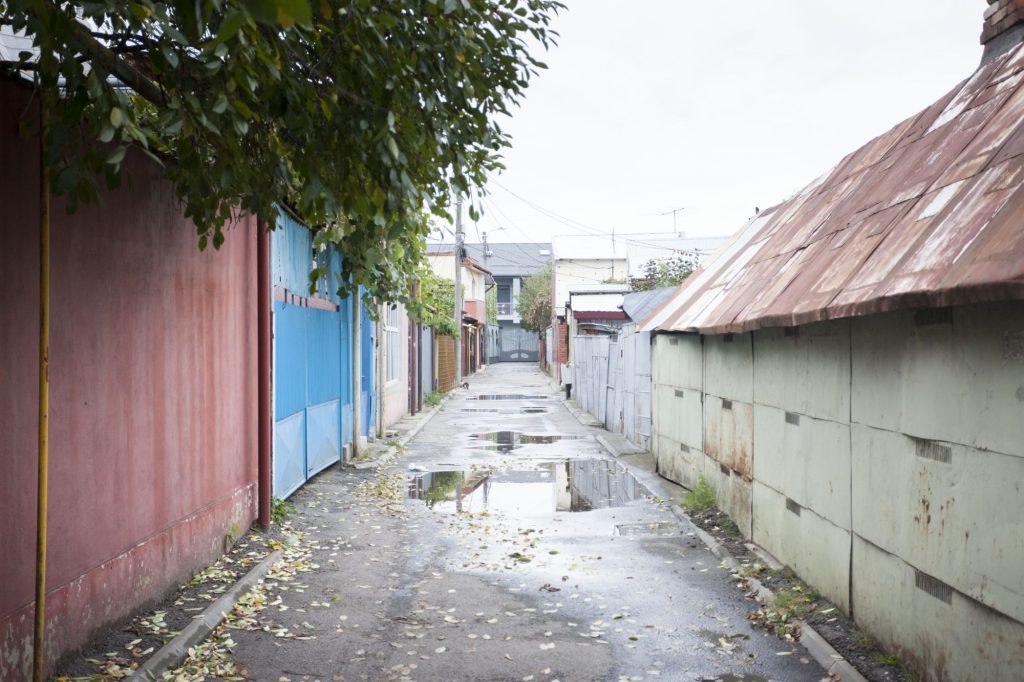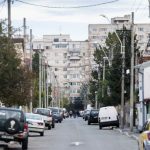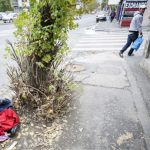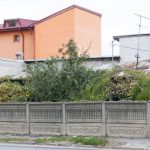Text: Mihai Duţescu
Photo: Andrei Mărgulescu
I am 36 years old and I was born in Alexandria, Teleorman County. Alexandria is a town with a population of about 50,000, located south of Bucharest; that’s an hour’s drive on an ordinary day, when pigs are not slaughtered in the countryside or it’s not the Day of the Dead, in spring or autumn.
Even though I had gotten to Bucharest one way or another before 1989, my first conscious contacts with this city were immediately after the Revolution. Then, in the first days of January 1990, without me and my sister understanding much, mom and dad picked us up by car from the countryside, where we were spending our winter holiday, and the four of us went to Bucharest. Once we arrived, we did what had to be done—we ticked off a visit to the Heroes’ Cemetery, candles by the wall of the Faculty of Architecture, a visit to the People’s House (The Palace of the Parliament)—a kind of program, no different from the routines and rituals we’d been used to in all the years before. My first real and coherent memories of Bucharest are of then: an almost two hours’ journey through the blizzard and the cold, to get to an empty, deserted city. Then, despite the cold and desolation, I remember my folks’ enthusiasm; they were still young, only 33. Lastly, a red Dacia stopped in the middle of a huge white field—my little sister and I, on the back seat, looking at the People’s House through a steamy window, swaddled in some sad little overcoats and with those monstrous Russian fur hats on our heads, which we wore reverently and which we took care not to lose, to leave in our desks at school, because they’d cost an arm and a leg.
This was followed by something a lot more palpable and hysterical: the restitution of farmland and work in the countryside. In the early 90s, during the summer holidays, my grandpa and I would go to the market with goods; we would come through Rahova and we would usually stop at Unirii, and sell watermelons. But we also sold onions and carrots and, even brooms—and apart from Unirii Square, we also went to Matache, and to 1 Mai, and we slept under the stalls in Amzei or Gorjului. For me, those years, and the Bucharest of those years, represented a sort of teaser for the demented years that followed, with Văcăroiu and then Ciorbea at the head of government, with inflation and mockery and plenty of tensions—the period when I grew up and decided to apply to read Architecture.
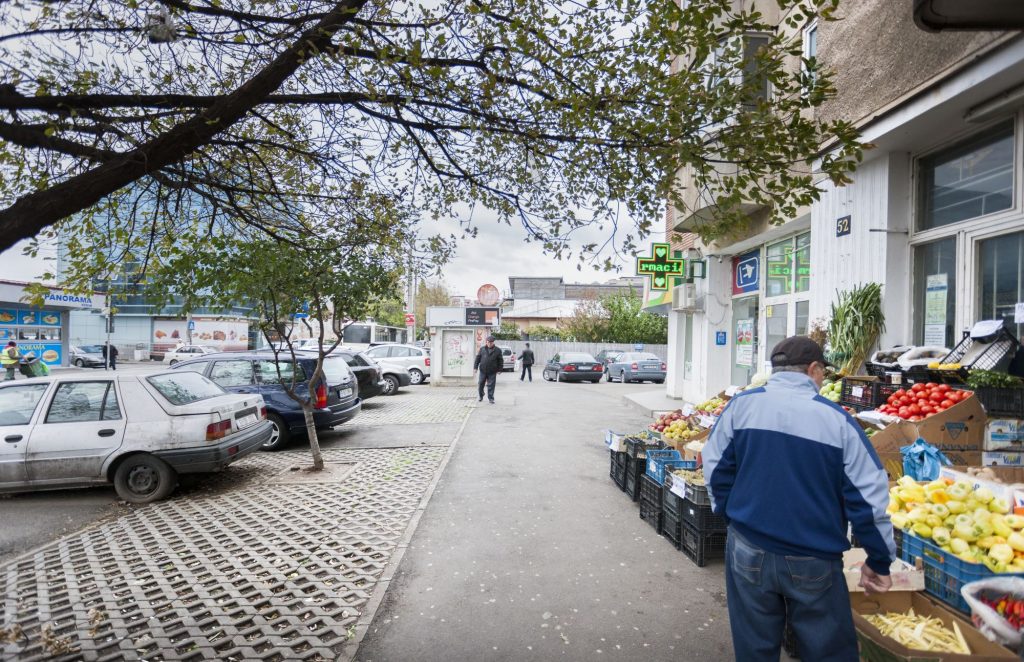
So there followed about three years with weekly tutoring in drawing, with a commute to Bucharest, to my parents’ exasperation. Bucharest meant to me then, to an overwhelming extent, Rahova neighborhood.
The bus left me there, I took tram 32 to Unirii from there, I also returned there and, if I missed the evening bus, I had to hitch a ride. In the beginning I hadn’t developed any feelings for Rahova yet, there was just a dull, functional familiarity. But as the break from my hometown and transfer to the faculty in Bucharest drew near, Rahova started to become what it actually is, more or less: a gateway to a new and fascinating world, the first contact with the City, for all those like me.
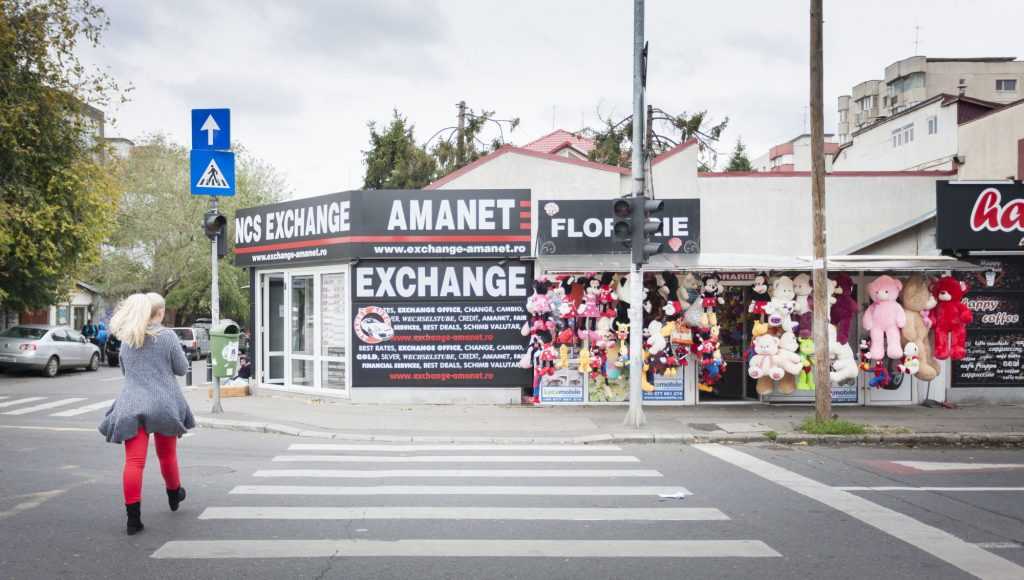
So I got into the long‑dreamed‑of faculty and I had to live in Tei, but part of my heart, so to speak, remained in Rahova.
I went through Rahova about once a week, whether I wanted to or not; if I didn’t go to Alexandria for the weekend, I still had to rush from Tei to the bus station, at least for a package of food from home.
I didn’t escape Rahova after graduation either, when, after my father died, mom found some unforeseen inner resources and committed to a mortgage to get us, me and my sister, an apartment in a clean sunny building across from Bolintineanu High School. For the price of that apartment she could’ve gotten a studio in other, better neighborhoods; so, after all, why not Rahova? Especially since it would’ve made it easier for her to visit us, coming from Alexandria: she’d get off the bus on the outskirts of Bucharest, take tram 32 and, after 4–5 stops, done.
In the meanwhile, she has moved into this apartment; she’s left Alexandria for good and has come closer to us, to raise her grandchildren—due to the fact that both my sister and I have made tons of other things somehow specific to middle‑class wannabe adults from Eastern Europe, including children.
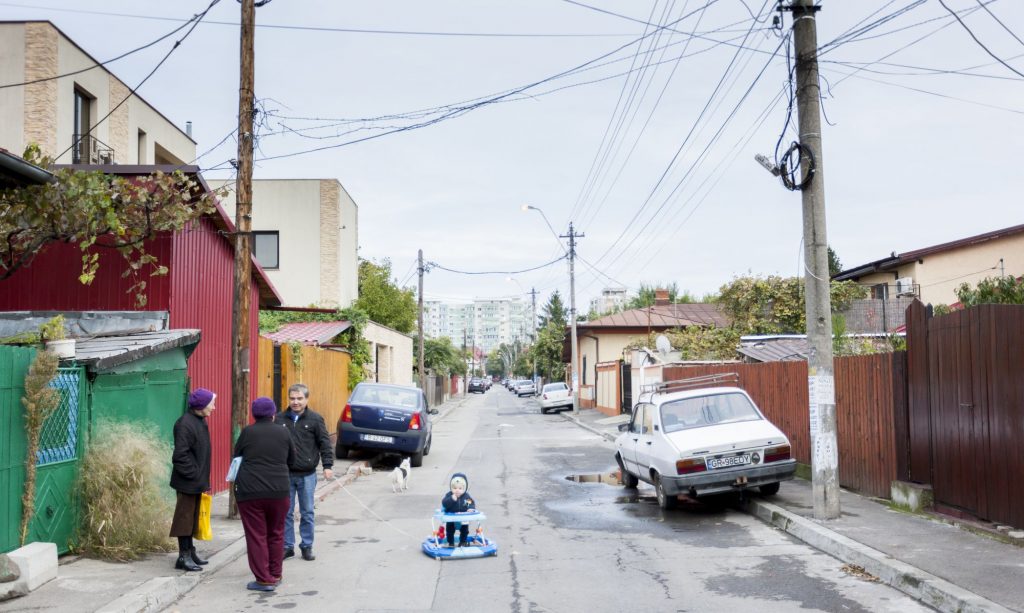
Unlike my sister, even after I moved out of the apartment now occupied by mom, I remained faithful to the area: I built myself a house somewhere on the western boundary of the neighborhood, where Rahova borders Drumul Taberei (Camp Road, a neighborhood in south‑west Bucharest), being separated by Șoseaua Antiaeriană (Antiaircraft Road) and by the military base of the same name. Though in a continuous transformation, there is a well‑preserved enclave of the old slum of Lupeasca village, as it was called in the 1930s, which had the luck to remain undemolished, bearing in mind that in Rahova apartment buildings were being worked on continuously in the 1980s. Its luck seems to have come from the fact that on a street around here with a funny name, on Moș Adam (Father Adam), there lived—still lives?—Ceaușescu’s sister, in a two‑story villa. In fact the only one on the whole street at the time. You’d go to her and her husband, the administrator of the pub across the street, in 13 September Market, if you needed pork, alcohol, or authorizations for an ARO car: from what the neighbors recount, things occurred much like in “The Secret of Bacchus” (Romanian comedy from 1984).
From a technical point of view, let’s say, this little piece of neighborhood is defined by a sort of undisturbed monotony: a long stretch of cross streets, between the two larger arteries—Antiaeriană and Mărgeanului (Coral Street) —with tiny plots, parceled out approximately by the same logic, and houses, most of them single‑story, completely devoid of cultural values, but alive, very much alive, resulting strictly from their inhabitants’ way of life, from the transformations of family structures, from their direct needs.

Within proportions, it somehow reminds me of a famous Dutch project, Borneo‑Sporenburg: a medium‑density layout, obtained from very small and nearly identical plots, disrupted here and there by grand gestures, grand landmarks at a macro‑urban scale—towers, slab apartment buildings, community spaces.

In Antiaeriană there are no community spaces, and the grand gestures disrupting the monotony of the plots are some schools, kindergartens and dorms of the military base, alongside some Gypsy turreted palaces, or the recent apartment buildings, which have started to rise up between houses, stretching the town development limits of the land, the attic, the height, the backsets.

Even though there are no communist apartment buildings in Antiaeriană, this area has enough in common with Rahova and, generally, with all of south Bucharest and with the south of South Bucharest. In the first place, the people—as my wife says, brought here by destiny, though she was born and raised in a neighborhood of the capital that’s a bit more airy—so “in the first place, the people”. This is because truly the people of Rahova stand apart from the rest of the people of Bucharest by the fairly high percentage of boys and girls from Teleorman who, just like me, became acquainted with the neighborhood willy‑nilly, and thus psychologically trained for some years in a row, get to accep it and move here. They go on living much like in Teleorman, let’s say—the same rhythms, the same benchmarks, with the advantage, however, of having more resources at their disposal, malls and other wonders. There are those from Giurgiu too who get to live here, Giurgiu also being a kind of Teleorman, but more emancipated, given its proximity to the beautiful Bulgarian city of Ruse.
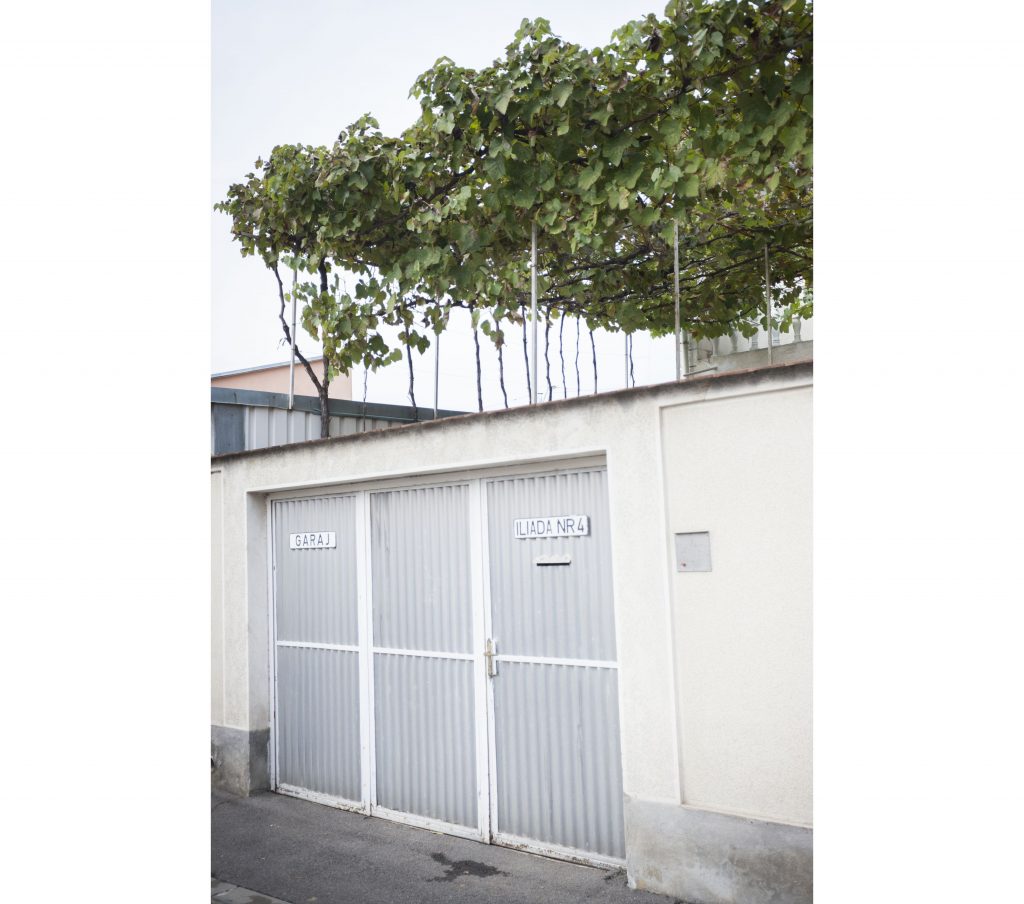
I like to think that there are people born in Olt County who also live alongside the rest of us in Rahova; boys and girls from Slatina, Drăgănești, Caracal, Corabia—or from neighboring villages.
Finally, I have neighbors who still preserve the accent and certain lexical structures specific to deepest Moldova, or others who still keep their Brăila license plate numbers. Finally, there are those with Bulgarian license plates among my neighbors; nice guys, besides.
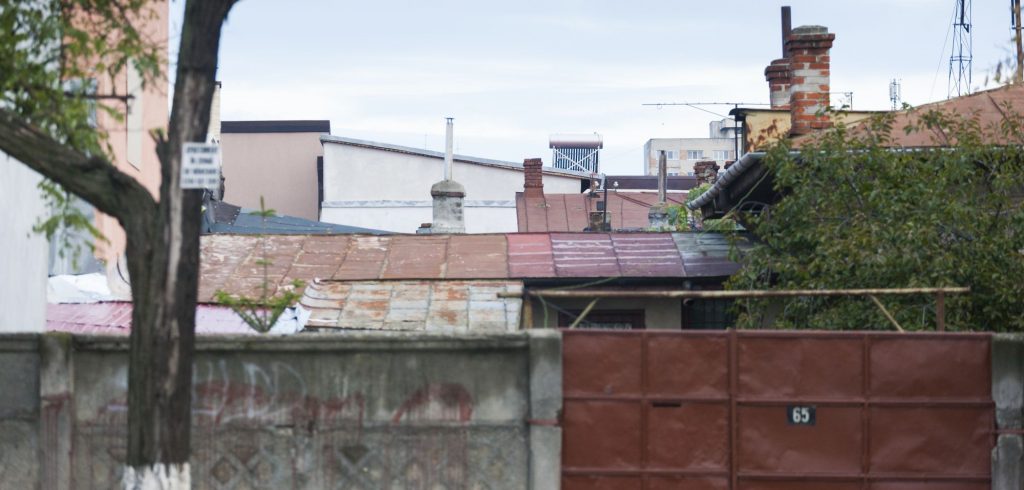
I wouldn’t leave Antiaeriană except for something substantially better—perhaps for a house with a garden, in a hidden little street in the Center—and the only shortcomings I feel would be a subway stop, a park and possibly more stylistic variety when it comes to the music my neighbors listen to. Otherwise, as far as I’m concerned, everything is almost perfect here, in the almost hostile context of Bucharest today.
